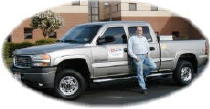The Best Engine Oil Filters and Air Filters? Nanofibers rule!
“C’mon. Give it to me straight. What’s the best filter to use on my Audi, Corvette, Chevy, Mini-Cooper, Harley, Honda, Ford, Chrysler, etc?” OK, I’ll tell you. Let’s talk about engine oil filters and air filters.
There are some interesting ideas “out there” about filtration. Two weeks ago I got into a couple of long e-mail exchanges about engine oil filter performance. A former race-engine builder had the mistaken idea that racing filters are great for regular vehicles. He didn’t realize that they’re horrible because they let the entire range of wear particles pass freely through the engine.
And how many people put an oiled-gauze filter in their air intake as a “performance upgrade”, not realizing that they’ve probably tripled their engine wear rates? K&N filters are probably the most popular example, and I’m a bit embarrassed to admit I used to use them in all my vehicles. K&N’s site is www.knfilters.com – just try to find data on the wear-particle sizes they remove, or how well they control wear. Sure they have a million-mile warranty, but it’s on their washable/reusable filter – not your engine. A number of people have wondered about the fact that their filter air-pressure gauge never moves with a K&N: if you can’t capture enough dust particles to clog up the filter, you’ll never see a significant pressure drop unless it’s covered with leaves and bugs.
On the other end of the spectrum are the new Ea filter line from AMSOIL – military nanofiber filtration technology that’s been used for years in the air-intake filter on the M1A1 Abrams battle tank for the US Army. Nanofiber filtration technology has never been available for normal private vehicles until now. These filters allow among the highest possible flow at nearly the lowest pressure drops, yet ALSO filter out the smallest particles of anything on the market – all at the same time.

Most people don’t realize how critical their filters are to vehicle life. Here’s an excerpt from a friend of mine who has been employed by GM as an engineer for many years:
“…EaO Oil Filters which have the best efficiency rating in the industry. EaO Filters provide a filtering efficiency in accordance with industry standard ISO 4548-12 of 98.7 percent at 15 microns.
From their site: An SAE report by David R. Staley, General Motors Corp., states: “The smallest particles most popular filters captured with high efficiency are sized 25 to 40-micron, depending on the filter brand…[however] controlling the abrasive contaminants in the range of 2 to 22-micron in the lube oil is necessary for controlling engine wear.” These tests also confirmed that removal of particles down to 2-micron in size virtually stops the abrasion wear cycle.
This paper also states “wear was reduced by 70 percent with 15-Micron filtration”. EaO, 98.7% Absolute Efficiency at 15 microns, according to this paper Amsoil has reduced engine wear by 70%! Add to that a By-Pass system that effectively stops particles down to one micron in size and Amsoil has virtually eliminated wear all together, or at least to the point that the rest of the vehicle will fall apart first.”
That ends the GM engineer’s comments. By the way, the EaO filters (The O is for Oil) have completely premium construction throughout, and are warranted for 1 year or 25,000 miles in typical service.
Similarly amazing are the EaA filters (the A is for Air), because they are 98% efficient at 2 microns. Note the GM engineer said that controlling the 2-22 micron particle size is how you control engine wear rates. Most people don’t realize that airborne dirt is the source of the vast majority of wear particles. So if your air filter takes out 98% of the 2 micron particles before they can enter your engine, you have “virtually eliminated wear altogether” – at least, the abrasive particle wear which is responsible for most drivetrain wear.
Engineers will point out that this doesn’t address filtering out the additional wear particles created internally in the engine from areas of previous wear-particle surface damage. That’s true, but a nanofiber air filter does allow that wear rate to rapidly reduce.
The remaining part of wear is operational surface contact wear, which is handled by your oil filtration (full-flow and “bypass” filtration), and by your engine oil’s anti-wear properties… a topic for another time.


My friend on Orkut shared this link with me and I’m not dissapointed that I came to your blog.